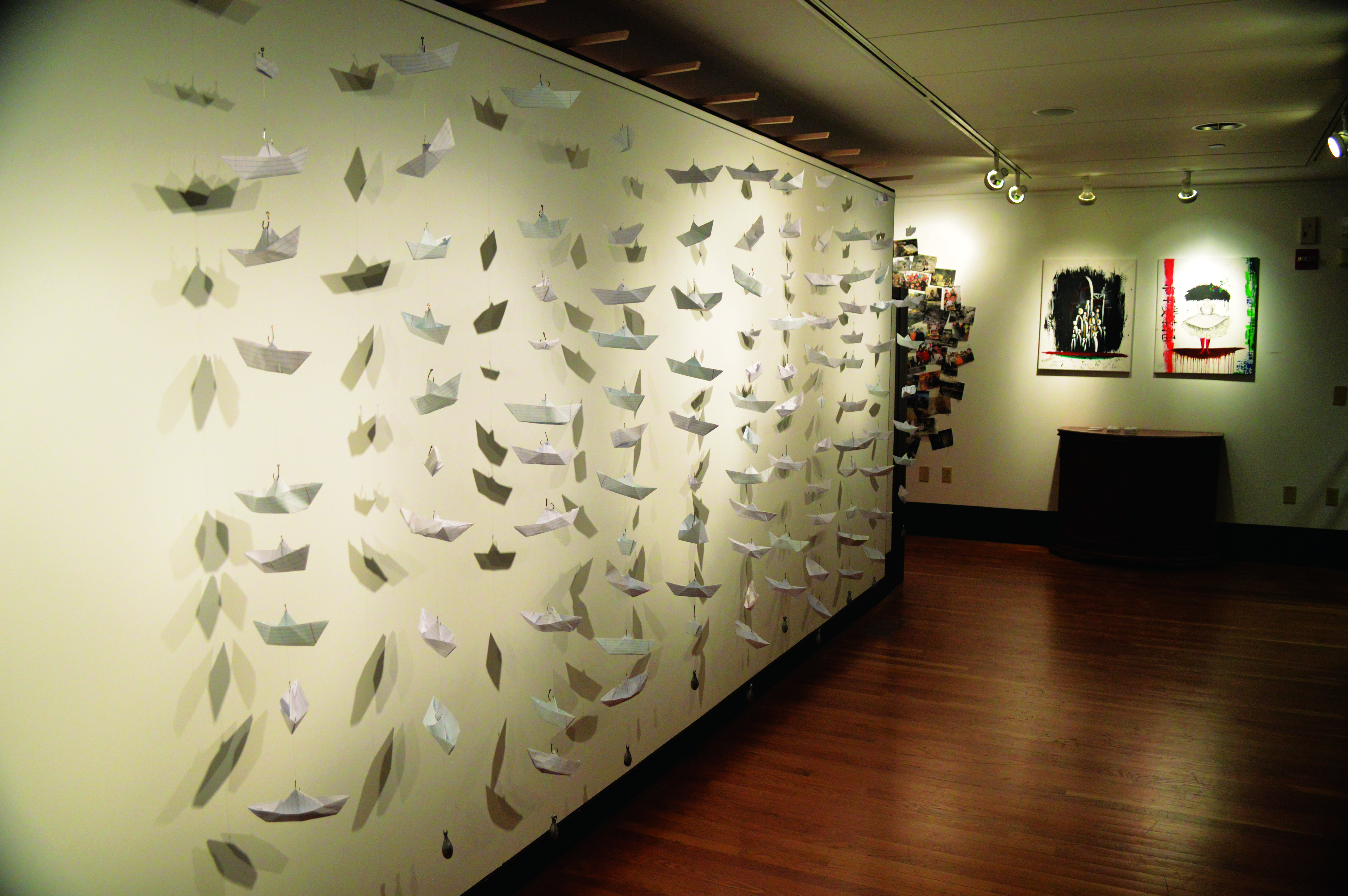
An exhibit in Silliman College seeks to lend the refugee crisis a human face.
On display in Maya’s Room in Silliman College, Mohamad Hafez’s exhibit, “Refugees: Stories of Life’s Dreams and Scars,” illustrates the struggles of life as a Syrian refugee. Including works of sculpture and installation by Syrian-born artist-architect Hafez as well as paintings by a brother-sister pair of Jordanian refugees now living in New Haven, the exhibition hopes to raise awareness about the current events in Syria and Iraq and to tell the human stories that are often omitted from discussions of these countries’ political turmoil.
“I’m trying to bring a better vision and picture particularly on the refugees and what they actually went through,” said Hafez. “I’m trying to expose the real humanity in the situation.”
Born in Damascus, Hafez said that he wanted his exhibit to reflect the political turmoil occurring in the Middle East, as well as the East-West juxtapositions that arise from his own background as a Syrian educated in the United States. After witnessing the chaos in his home country, Hafez noted that he felt particularly uneasy about the war and refugee crisis, and explained that the exhibit expresses his mixed feelings about “going home.” Hafez added that the current show in Maya’s Room is more explicitly political than some of his previous displays, which have often taken the form of installation pieces that incorporate found objects, scrap metal and paint into surrealistic Middle Eastern streetscapes.
A graduate of Iowa State University’s architecture program, Hafez explained that his educational background plays a major role in his work as an artist. During many late nights spent building models as an architecture student, Hafez began to use the excess scraps of his constructions to fashion mock streetscapes of his hometown. These pieces, built with the leftovers of his architectural output, continue to influence his current work and exhibition design, Hafez noted. Several such streetscape installations are on display in “Refugees: Stories of Life’s Dreams and Scars,” alongside a life-size raft suspended from the ceiling and various works of painting and sculpture.
A handful of paintings were contributed by Wurood Mahmood and her brother, refugees from Iraq who now live in New Haven and attend Gateway Community College. Mahmood, who has been painting since the age of 15, said that she hoped her pieces would raise awareness about the current situation in Syria and Iraq. Harper Loonsk ’18, director of assistance at the Yale Refugee Project, was paired with Mahmood while volunteering with the project, and said that the painter has become her best friend.
“She and her brother are amazing artists,” Loonsk said. “I think everything about this exhibit is incredible and aesthetically pleasing, especially with all of the different mediums.”
Silliman College Master Nicholas Christakis, expressed his excitement to host the exhibition in an email to Silliman students, highlighting the crucial role of art as an “open and deeply human expression.”
“I see the arts of all kinds as crucial features of our humanity and of our civilization,” Christakis said. “In some ways, I think great societies are measured by their commitment to the arts.”
A public opening reception for “Refugees: Stories of Dream’s Life and Scars” will take place on Feb. 12, and the show will remain on display through Feb. 21.
Correction, Wed. Feb 10: A previous version of this story incorrectly stated that Mahmood was a refugee from Jordan; in fact, she is from Iraq.







